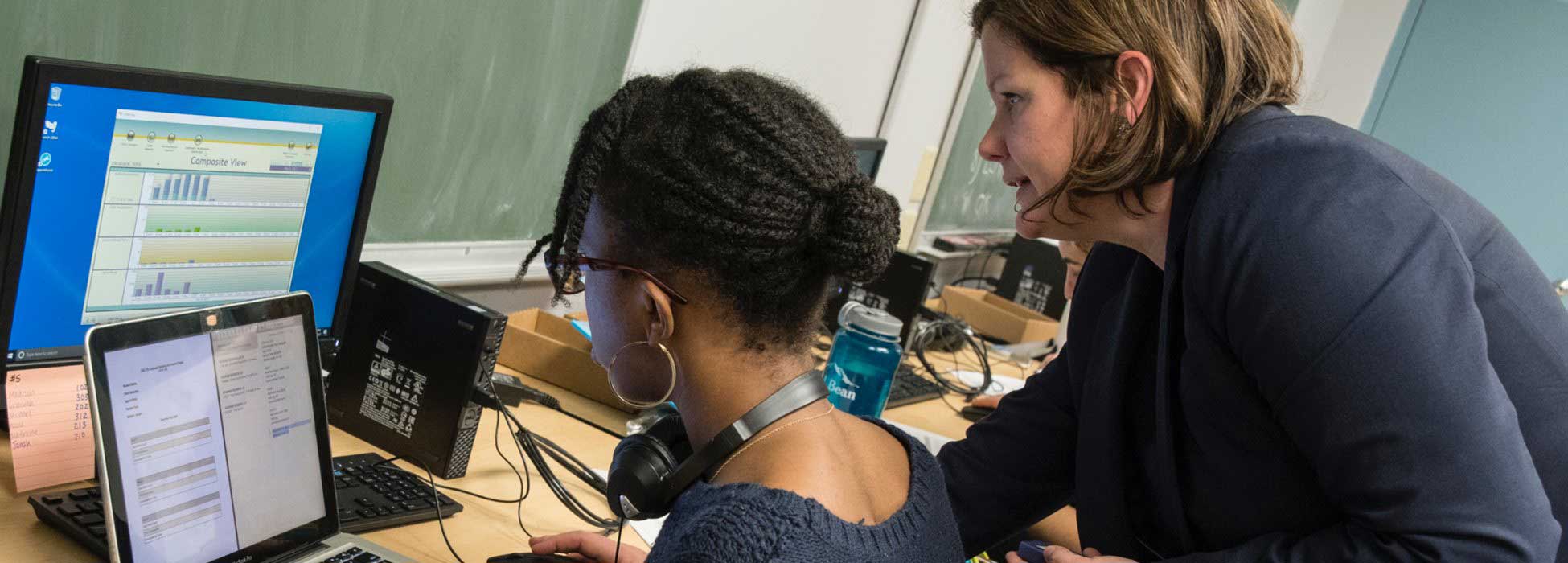Speech pathology students are required to analyze a half-hour recorded conversation by listening to the recording and transcribing—by hand—every word, phrase, and turn in the conversation. That process can devour the bulk of a semester.
Thanks to LENA, students at URI now have an advantage.
“We are the first speech and hearing program in the country to offer this hands-on experience to all of our undergraduate students.”Michelle Flippin
Michelle Flippin, assistant professor of communicative disorders in the College of Health Sciences, part of URI’s Academic Health Collaborative, is pioneering classroom use of LENA System technology in her language development course. The LENA System is cutting-edge technology and software for measuring and analyzing children’s speech and conversation that, to date, has been almost exclusively used in research.
“A generous grant has allowed us to equip our lab with 80 DLPs and 10 LENA Pro software licenses, and we are the first speech and hearing program in the country to offer this hands-on experience to all of our undergraduate students,” Flippin notes.
LENA technology employs a digital language recorder that slips into the pocket of a child’s T-shirt. The device records all conversation and environmental sound within several meters for up to 16 hours. LENA software analyzes the recording to determine who is speaking, how often the conversation turns from adult to child, and includes word counts and whether a TV or electronics are in use.
Senior communications major Nicol Hernandez helps Flippin run the weekly LENA lab, where students upload their recordings, analyze the data, and report their observations and insights.
“LENA divides up the conversation into meaningful utterances and shows the back and forth,” Hernandez says, pointing to time stamps, graphs, and vocabulary measures on a computer screen. “It is not just a bar graph. You can also listen to the recording.” This allows students to understand what is happening in the environment when there is a lull or an uptick in conversation.
“They’re finding patterns in their own data and discovering why they’re occurring,” Flippin says. “What’s happening in down time? Are they eating, watching TV?”
The unobtrusiveness of the recording device is also important. “This is a good tool to see how the children are in school going about their day, rather than one-on-one with a speech pathologist where they might be shy,” Hernandez says.
Flippin plans to employ LENA in URI’s Speech and Hearing Clinic and is working with students to prepare a presentation on how LENA is used in the classroom for the 2018 American Speech-Language-Hearing Association’s national conference.
“Having been able to work with LENA at URI, I was able to mimic real-life career situations,” says sophomore Sarah Carney. “It gives us the opportunity to analyze language samples in a complex manner even before field practice.”
That might just give URI students a competitive edge. “I’m hoping they will have an advantage when applying for and succeeding in graduate school,” Flippin says. “It’s a unique skill set.”

